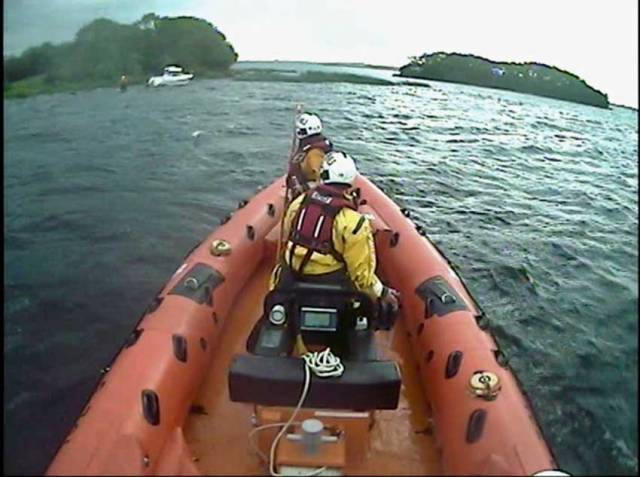#RNLI - Lough Derg RNLI’s volunteers were surprised to find a man whose cruiser had grounded near Hare Island had spent the night alone stranded in the lake as he was reluctant to call for help.
Valentia Coast Guard requested Lough Derg RNLI to investigate a report from a passing cruiser this morning (Friday 28 July) of a vessel, thought to have slipped its moorings, that was aground behind Hare Island.
At 9.15am the lifeboat crew located the 16ft cruiser in Church Bay, behind Hare Island on the Clare shore. Church Bay is known for particular hazards such as sudden shallows and rocks.
The lifeboat proceeded with caution and, when sufficiently close to the cruiser, an RNLI volunteer waded to the vessel – where a man was found on board, asleep in the cabin below.
Within half an hour the boat was off the rocks and taken under tow to the harbour at Garrykennedy.
Its skipper, who was safe and unharmed and wearing his lifejacket, told the lifeboat crew that he had been stranded on his boat since 8pm the previous evening, but was reluctant to call the rescue services, anxious not to put anyone out.
Winds overnight on Lough Derg were strong westerlies blowing Force 5 and gusting up to Force 7.
“No callout is routine — our training and experience tells us to expect the unexpected,” said Lough Derg RNLI helm Eleanor Hooker.
“We approached what we thought was an empty vessel which had slipped its moorings and found a person onboard who had spent the night alone, stranded in stormy conditions, and without help coming for them.
“The RNLI are there to answer any call for help. No lifeboat launch is ever a waste of our time or resources.”
Pat Garland, deputy launching authority with Lough Derg RNLI, added: “I would urge all boat users when is difficulty to call 999 or 112 and ask for the coastguard.
“RNLI lifeboats are launched at the request of the Irish Coast Guard, who then make the correct call on which search and rescue assets to deploy to the scene.
“We would urge the public not to delay calling for help. This could have had a very different outcome.”































































